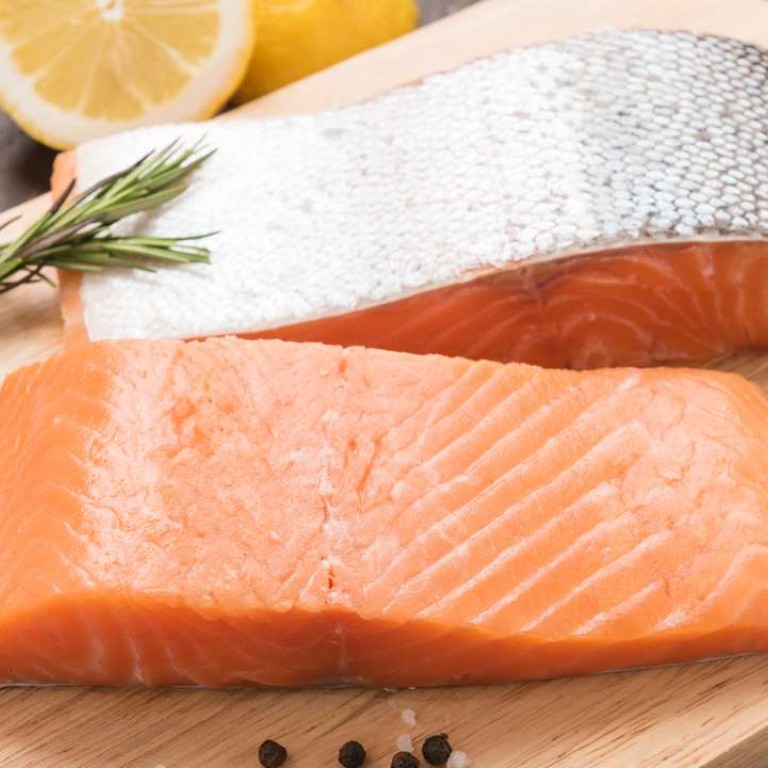
Is wild salmon a better and healthier choice than farmed?
Choosing wild salmon over farmed can help you reap more nutritional benefits while avoiding higher levels of fat and the dangers of toxic contaminants
Is wild salmon healthier than farmed?
The answer: Yes
A healthy diet, we’ve been told, includes two to three servings of oily fish a week. As well as being a good source of protein, oily fish – such as sardines, herring, tuna, mackerel, trout, tuna and salmon – is rich in omega-3 fatty acids, a type of fat that is said to protect against a range of conditions, from cardiovascular disease and age-related vision loss to dementia.
Salmon is perhaps among the most popular of the oily fish varieties. It does not have an overpowering fishy smell or flavour like, say, sardines or mackerel, is widely available, is easy to prepare, and tastes delicious cooked or raw.
But in recent years, we’ve been advised to choose wild salmon over the farmed variety in order to reap the most nutritional benefits. There are a few reasons for this.

For starters, farmed salmon subsists on a different diet from wild salmon. Some salmon farms give their fish food that it would not ordinarily find in the ocean, such as fishmeal and fish oil, chicken meal, grain, and vegetable protein such as soy. The result: salmon that contains more calories and unhealthy omega-6 fatty acids than the wild variety.
Graeme Bradshaw, a homeopath and naturopath, and founding director of Integrated Medicine Institute in Central and Discovery Bay, says there are significant differences in nutrition composition between wild and farmed salmon. He cites the United States Department of Agriculture National Nutrient Database for Standard Reference 21, which states that a 198g portion of wild salmon contains just 281 calories, compared to 412 calories for the same amount of farmed salmon.
The farmed variety also contains more than twice the amount of fat found in the wild variety (27g versus 13g), more saturated fat (6g versus 1.9g), and more omega-6 fatty acids (1944mg versus 341mg). Both varieties have almost equal amounts of protein and cholesterol. “Selenium levels are also twice as high in wild salmon compared to farmed salmon – 110mcg versus 50mcg,” Bradshaw adds. “Selenium is desirable in fish as it antidotes mercury, a toxin that can often be found in seafood.”

Farmed salmon is associated with another major health concern: toxicity. Bradshaw cites an independent laboratory test commissioned in 2003 by Environmental Working Group that tested farmed salmon steaks purchased at grocery stores in various US cities. Seven of 10 of these steaks were contaminated with polychlorinated biphenyls (PCBs) at levels that raise health concerns. “PCBs are persistent, cancer-causing chemicals that were banned in the US in 1976,” says Bradshaw. “But due to their persistence, they continue to contaminate the environment and food supply.”
New in Hong Kong: Don’t like fish? Eat pork with heart-healthy omega-3 fatty acids added
In addition to being carcinogenic, PCBs present other health risks, in particular, neurodevelopmental risks to unborn children from maternal consumption of PCB-contaminated fish.
“Farmed salmon accumulate PCBs from the fishmeal they are fed,” says Bradshaw. “The fishmeal contains ground-up small fish and fats, and PCBs tend to concentrate in oils and fat. In fact, previous tests of salmon feed have consistently found PCB contamination.”
But it’s not all bad news. Scientific analysis suggests that the risk of exposure to contaminants in farmed and wild salmon is partially offset by the fatty acid-associated health benefits.

Still, in terms of nutrition, you are better off eating wild salmon, especially if you consume the fish several times a week. And if you can’t find wild salmon, Bradshaw says that small amounts of farmed salmon are still better than none – just check to see where the salmon was farmed. “Farmed salmon from Norway and Scotland have higher levels of the contaminants,” he points out. “Farmed salmon from Tasmania, Canada, New Zealand are less contaminated with PCBs owing to the different fish feeds used. If choosing Norwegian salmon, found in most restaurants, limit your intake to once every two weeks, although some reports say monthly. If choosing salmon from non-North Sea locations around the Pacific, weekly consumption is safe. Wild salmon can be consumed several times weekly.”
The 10 best nuts to eat, why they’re so good for you, and alternative super foods if you’re allergic
According to a 2005 Journal of Nutrition article (Quantitative Analysis of the Benefits and Risks of Consuming Farmed and Wild Salmon by J. A. Foran et al), young children, women of child-bearing age, pregnant women, and nursing mothers not at significant risk for sudden cardiac death associated with CHD (congenital heart defect) but are concerned with health impairments such as reduction in IQ and other cognitive and behavioural effects, can minimise contaminant exposure by choosing the least contaminated wild salmon or by selecting other sources of purified omega-3 fatty acids in the form of pharmaceutical-grade supplements.

